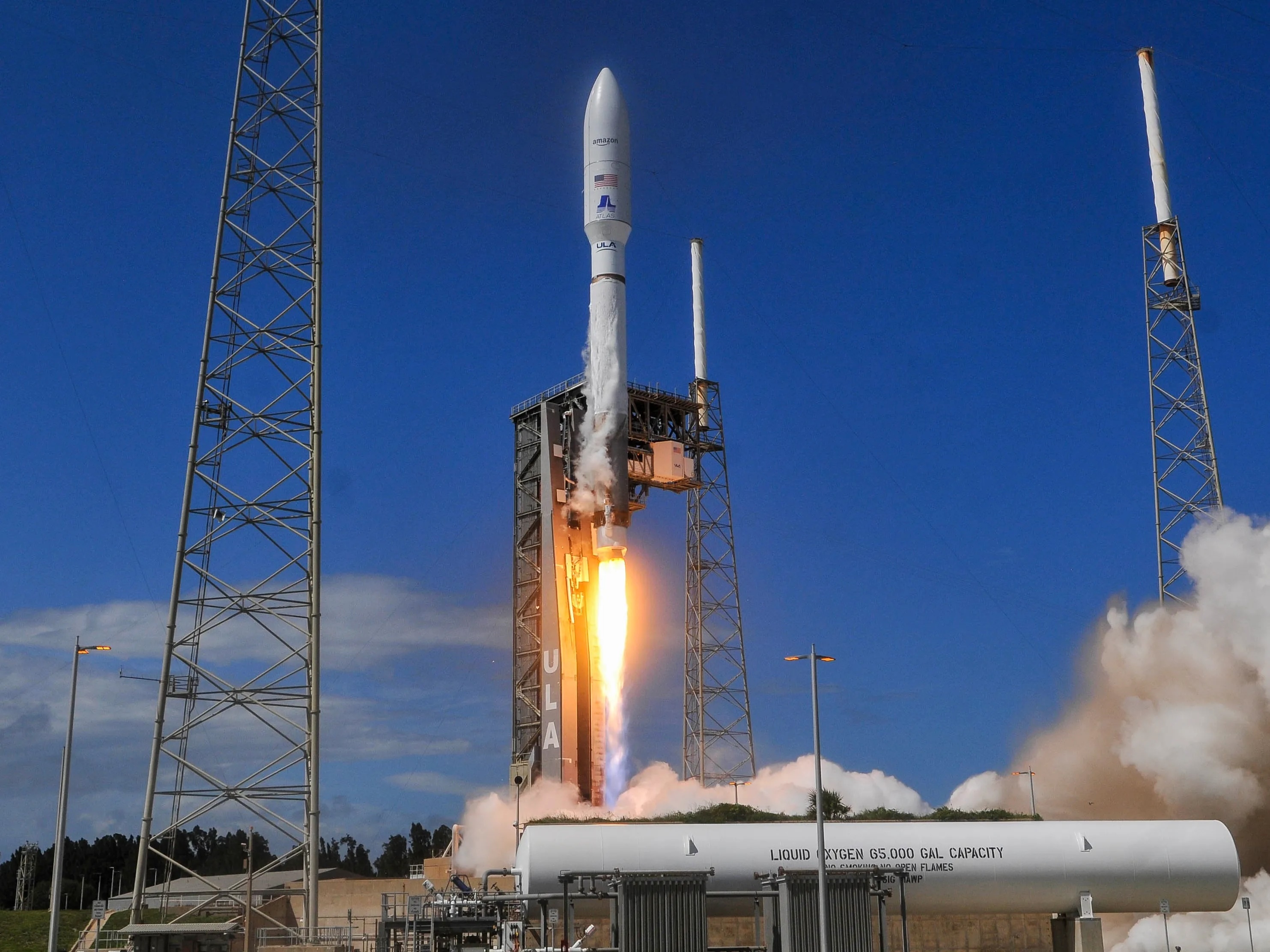4.04.2025
United Launch Alliance crews are targeting noon EDT April 9 to launch an Atlas V rocket carrying Amazon's first 27 production satellites for the company's planned $10 billion Project Kuiper internet constellation.
The Atlas V will ascend into low-Earth orbit from Launch Complex 41 at Cape Canaveral Space Force Station. The mission — named KA-01 for Kuiper Atlas 1 — has a three-hour launch window.
And Amazon reports this Project Kuiper satellite payload will represent the heaviest payload ever flown on an Atlas V rocket — requiring five solid rocket boosters, its most powerful configuration.
Amazon is constructing a Project Kuiper complex at NASA's Kennedy Space Center, at the Launch and Landing Facility. A $120 million, 100,000-square-foot processing plant standing about 120 feet tall will prep Project Kuiper’s 3,200-plus satellites for launch from the Cape, with a $19.5 million, 42,000-square-foot flight hardware building standing alongside.

"Project Kuiper will deliver high-speed, low-latency internet to virtually any location on the planet, and we expect to begin delivering service to customers later this year," an Amazon press release said.
More than 80 ULA, Blue Origin, SpaceX and Arianespace rockets will be needed to carry these first-generation satellites. In the coming years, ULA will deliver seven Atlas V launches and 38 launches on larger Vulcan rockets for the program.
“We’ve designed some of the most advanced communications satellites ever built, and every launch is an opportunity to add more capacity and coverage to our network,” Rajeev Badyal, vice president of Project Kuiper, said in the press release.
“We’ve done extensive testing on the ground to prepare for this first mission, but there are some things you can only learn in flight, and this will be the first time we’ve flown our final satellite design and the first time we’ve deployed so many satellites at once," Badyal said.
"No matter how the mission unfolds, this is just the start of our journey, and we have all the pieces in place to learn and adapt as we prepare to launch again and again over the coming years," he said.
The April 9 inaugural launch should deploy satellites 280 miles above the Earth's surface. Afterward, the satellites' electric propulsion systems will transport them to assigned orbits 392 miles up.
As a first step in October 2023, an Atlas V launched Amazon's prototype KuiperSat-1 and KuiperSat-2 satellites from Cape Canaveral Space Force Station. The 27 satellites poised for liftoff represent significant upgrades.
"We have improved the performance of every system and sub-system on board," the press release said.
Quelle: Florida Today
